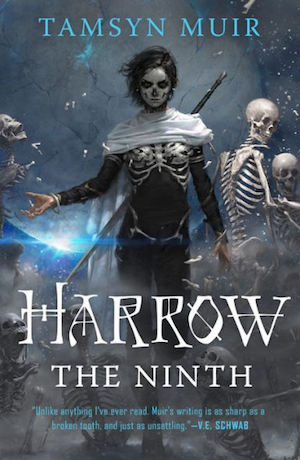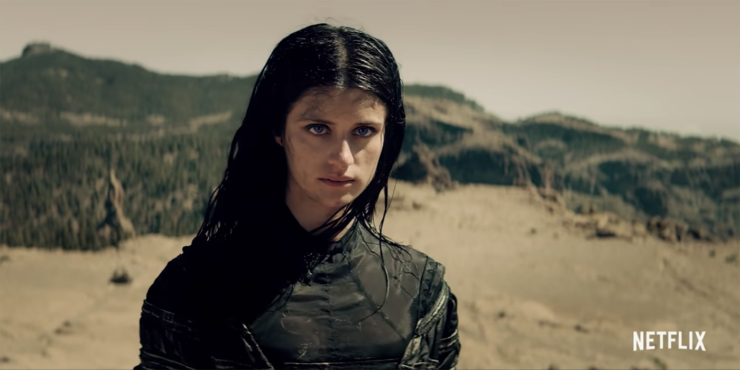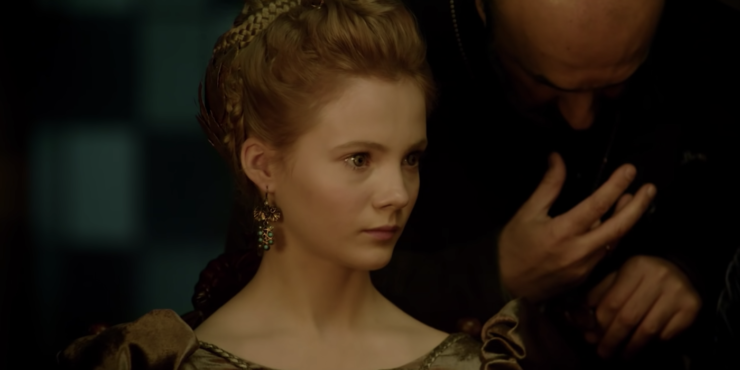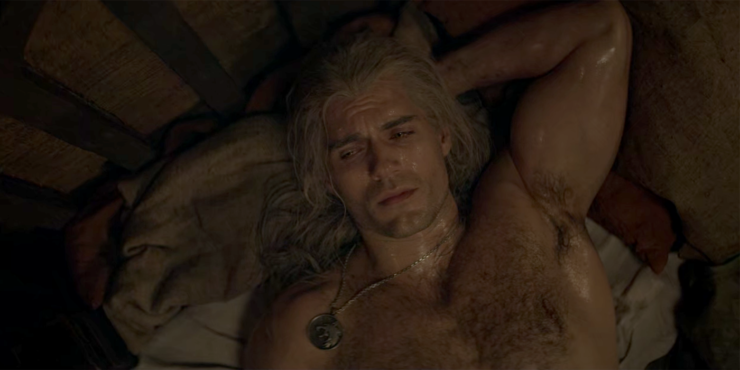Adaptations are difficult. It takes ingenuity and attention to detail to translate hundreds of pages of thorough exposition and worldbuilding into a compelling visual spectacle. Whenever a novel becomes a film or a TV series, artistic minds are set on a collision course. That collision of ideas results in different visions of the same characters, topics, and themes; as a result, not all viewers accept the adaptation, however good it may be on its own merits. Netflix’s new Witcher series is no exception to this rule. Like all other television adaptations, the series deviates from the books. In the case of The Witcher, however, many of these changes, in my opinion, are largely unnecessary and do not make for a coherent story.
Like many longtime Witcher fans, I grew up on Andrzej Sapkowski’s novels. Admittedly, trying to distance myself from the characters I’ve grown attached to doesn’t come easily, but I tried to remain objective and open while waiting for the adaptation to finally arrive. By the time the show premiered in late December, I was curious to see how the showrunner and writers would interpret the novels, and was willing to accept the likely omission of the various Slavic elements and themes prominent in the books, as well as the clever literary and linguistic references and wordplay on the part of the author that would inevitably be lost in translation. Despite my scepticism about certain casting choices, I do not mind my opinions being challenged and tested—after all, a successful adaptation offers a unique glance into someone else’s mind. It allows you to access a different vision of the material you think you know and understand. In the case of The Witcher, however, the show challenged and altered the internal logic of the Witcher’s world while not adding great value to the story. As a result, the overall lack of context turns the show into a generic fantasy while ignoring the books’ unique elements and the subtle, but crucial, aspects of Sapkowski’s worldbuilding that set the Witcher saga apart in the first place.
[Spoilers for Season 1 of The Witcher and some discussion of the source material follow.]
Changes in Context
From the point of view of a reader already familiar with the books, most of the changes introduced in the show seem calculated to confuse the audience rather than provide additional context to the story. For example, in Aretuza (the prestigious equivalent of an Oxford University for mages), ascended sorceresses are shown to use their failed students as magical fuel. The show’s shocking revelation does not make much sense in the world of the novels, where even Aretuza drop-outs end up with fine careers and secure, comfortable lives. The forced drama surrounding this point seems absurd once we discover how rare and precious magically gifted individuals are—in the novels, even moderately talented mages are highly valued, and no shrewd person in their sane mind would resort to such wastefulness even to power up the magical core of the school. This new detail does not enrich the canon; it only serves to provide shock value at the expense of consistent worldbuilding.
Buy the Book


Harrow the Ninth
Similarly, in ostensibly expanding upon the story of Fringilla Vigo, the show effectively diminishes her character instead. In the books, Fringilla, a Nilfgaardian mage, never studied in Aretuza. She never became a fanatical follower of Emperor Emhyr. She was a shrewd, clever politician, like many sorcerers, carefully observing and attending to the interests of her colleagues and her family. In the series, however, her motivation is vague at best: Why is she a religious fanatic? Why is she suddenly an adept of dark magic, while others are not? Following the logic of the show, one has trouble figuring out why Fringilla was bitter over Yennefer taking her promised position at the Aedirnian court.
Aedirn is a fine Northern backwater, but the progressive and turbulent Nilfgaardian Empire should have been a much greater prize for any ambitious sorceress. However, the magnificent Yennefer, who never shies away from a challenge and yearns to play a game of thrones, resents this assignment in the show. Given Yennefer’s clear and intense ambition, this choice is perplexing at best. Perhaps Yennefer opts for Aedirn because Nilfgaard in the show is presented as a generic Evil Empire that does nothing but pillage, rape, and oppress. The show strays away from the nuanced depiction of the political conflicts in the books in favour of a stark black and white palette. This type of change can still make for a good story if and when the setting allows it. This particular setting, however, is rather grim and far from the good-versus-evil morality found in classic high fantasy.
A Challenging Setting
The show diverges from the worldbuilding of the books but does not offer an original and consistent setting in return. Viewers are left with the Good Northern Kingdoms and the Evil Empire to the south. One can certainly argue that, in the books, Nilfgaard is clearly no beacon of democracy in the medieval-ish crapsack world of the Witcher. But it should also be noted that the Northerners do not fare much better with their own rulers. While Sapkowski is more of a world-conjurer than a world-builder, he consistently conveys the complex political and cultural conflicts of the Continent clearly enough for his readers to understand the differences between the fractions. Mysteries and alliances unravel slowly, making you question the views of the characters and their loyalties.
Simplifying the setting somewhat in adapting the series may have been viewed as a necessity, but in removing much of the history and politics, we’re left with very little sense of this world and no explanation for its tensions and intrigues. In the show, the political, social, or cultural differences between Nilfgaard and the Northern Kingdoms are never explained or meaningfully addressed. The viewers do not know why they are at war. We can only guess if the conflict is about religion, wealth, natural resources, racist or/and nationalist ideologies. In the show, the states on the Continent are equally diverse, speak the same language (which is not the case in the novels), their mages even attend the same schools, and there is no racism or nationalism among the humans. Taken separately, these changes to the original setting do not make for an incoherent story, but together they create a background that seems undefined, unbelievable, and somewhat arbitrary when a bloody war breaks out.
Altering and Adding Characters

While never addressing the ideological clashes between the states of the Continent, the show also introduces new characters and changes existing ones. If done well, the creation of a new character can expand the original canon and make the fictional world seem more real. Elf Dara, however, arguably adds nothing to Ciri’s storyline. One can imagine the same events unfurling and the same challenges arising, all without Dara’s participation. Dara, who has suffered greatly at the hands of humans, immediately trusts and helps Ciri without a single reason that might help explain such openness. Even the replacement of Mousesack by a doppler is discovered by Ciri after she (and not Dara) challenges him with a round of questions. Dara stays by Ciri’s side, functioning only as a spectator without any purpose of his own; in doing so, he unnecessarily complicates the plot without contributing to the story or our understanding of this world.
In addition to inserting Dara into the story as a new character, the show’s creators also opted to change the framing of some already existing characters. Again, well-thought-out revisions and innovations can work marvels in adapting an existing work. However, changes to prominent characters can send ripples through the plot, stretching and straining it in the process. This is the case with my personal favourite character, the conflicted and terrifying, charismatic and undeniably brilliant mage Vilgefortz. From the genius of the books who is responsible for the victory in the Battle of Sodden Hill, he becomes a useless twerp in the show. During the climactic battle itself, he is bested easily by the non-magical knight Cahir.
Widely considered to be the greatest sorcerer of the Continent, Vilgefortz is supposed to become the main antagonist of the story that unfolds in the books. He is the mage who defeats Geralt in combat, thereby besting the greatest swordsmen of the North, who also happens to be a supernaturally strong Witcher. He possesses a dark, twisted mind, does unspeakable things, commits atrocities, occasionally shows flashes of reason, carries heavy Freudian baggage and severe PTSD in tow, and always remains brilliant. The show’s version of Vilgefortz does not remotely measure up to this formidable image; in this adaptation, he is no threat to anyone. It is Yennefer, by contrast, who triumphs in battle and seems poised to take over the world.
While the actress’s performance deserves as much praise as that of Geralt and Jaskier, the presentation of Yennefer in the show creates further inconsistencies. In the books, Yennefer is one of the rare female examples of a Byronic Hero—scornful towards society, attractive, brilliant, occasionally unbearable, tormented, misunderstood, and proud. Her backstory is revealed in bits and pieces, allowing her character to shine, creating a nuanced image of a complicated person. The novels do not justify her perplexing and often polarizing actions by explaining them in light of her “unhappy childhood.” She is a mystery. She is enigmatic. She has always been so, even before her transformation. Her ascendancy has only brought these qualities to the fore. Compared to this characterization in the books, her introduction in the show lacks subtlety.
The Yennefer of the books is flawed—physically, psychologically, and magically. While she is talented as a sorceress, her magical powers are not limitless. She can stand her ground in combat, but she is no great swordswoman. In the show, however, she alone is capable of destroying half the Nilfgaardian army, cutting mercenaries into sushi, wielding two swords like a martial artist. With such seemingly limitless powers, it is difficult to weave any sense of Yennefer’s weaknesses into the plot. Showing her facing off against her opponents almost seems pointless—she is already a conduit of pure chaos, the most of powerful and talented. This empowerment of Yennefer does a disservice to the plot rather than improving on the original; it takes away the opportunity for important character growth and flattens out her complexities.
Similarly, the complicated and conflicted knight Cahir is reduced to a generic bloodthirsty villain in the show for no obvious reason. Had we only seen him through Ciri’s eyes, this depiction would have been logical. However, we meet him several times in the course of the series, where he continues to act as an irrational, fanatical monster. A noble from a prominent family, Cahir in the novels is bound by honour, lives by a strict code, and is loyal to his people; he is in many ways a tragic figure, torn between conflicting loyalties. Based on the books, Cahir should play a prominent role in future events, but it seems impossible to change a character this much without changing the plot, as well
Magic in the World of The Witcher
Beyond changing the characters, the writers have also attempted to clarify the magic system of the Witcher series. It is an interesting goal, and worth the effort—the result, however, is less than logical. In one memorable scene, for example, Fringilla’s hand withers away the first time she uses a spell for telekinesis. Ignoring the ‘soft magic’ presented in the books, the show promises the viewers a ‘hard magic’ system akin to that of Patrick Rothfuss’ Kingkiller Chronicle, with its detailed explanations of how sympathy works. The show, however, never delivers on that promise. A couple of episodes later, we see sorcerers casting fireballs, teleporting on a whim, growing magical mushrooms, and hypnotizing crowds. And the greatest cost for this magic-fest is…an occasional nosebleed. The only ones who seem to pay the price are the mages from the Evil Empire of Nilfgaard.
The scene with Nilfgaardian mages sacrificing their lifeforce seems lifted straight from Brandon Sanderson’s Elantris, not from the Witcher Series. As in Elantris, where Fjorden is a religious dictatorship under the leadership of the Wyrn, the show version of Nilfgaard is depicted as a state of religious fanatics willing to give their lives to enhance the war effort of their frenzied leader, the White Flame. Again, rare and precious mages are used as fossil fuel. How many does the Evil Empire have to spare? There must be thousands, at least, if they cost less and are more expendable than a catapult.
The Target Audience

Attempting to satisfy both hardcore fans and casual viewers is a daunting task. In its first season, the show seems to swing between the two audiences, while never finding its own path. For viewers who are not familiar with the Witcher books, the show’s structure and worldbuilding is messy at best. Jumbled timelines offer no explanations and no insights into the world of the Continent. Who is sacking Cintra? Why are Nilfgaardians evil? How many timelines are there? Why is Queen Calanthe dead in one scene but alive and kicking in the next one?
For long-term Witcher fans like myself, many of the changes that have been made seem pointless. They make for a problematic story, where the facts do not add up. It is hard to believe the show’s version of Vilgefortz is meant to be seen as a compelling, multi-layered antagonist. Nilfgaard as a standard, straightforward evil empire is neither interesting, nor original. Fringilla studying in Aretuza makes no sense if she is a Nilfgaardian mage. The show presents a very different vision than the one brought to life in Sapkowski’s books. It is not a bad show. It certainly has potential. But it is not a great adaptation.
That said, the show still manages to nail certain aspects of the books perfectly: The banter between Geralt and Jaskier is flawless, and the music enhances the magical atmosphere of the stories. Geralt’s visions of Renfri add so much depth to his character, and Renfri herself is a perfect choice (both in terms of character and casting) that adds to a brilliant storyline. Also, Stregobor’s role in the series has been expanded, and, in the end, the viewers are given a character who we can all love to hate.
However, the subtlety of the books is missing from the show. It lacks logically consistent worldbuilding, breaks its own magical rules, and instead of presenting a world of complex political power plays and shifting alliances, it resorts to painting the sides in simplistic black and white. The jumbled storylines often leave you wondering what is happening on screen, and when. This particular creative choice is especially frustrating since no plot twists depend on the split timelines (as they generally do in HBO’s Westworld series, for example). Thus, the viewers are left wondering why they must jump decades back and forth, when it serves no larger narrative purpose. While this approach works as storytelling device in the first two books, it does not function well on television. Overall, though, The Witcher is a fine show for those viewers who have an open mind and feel no great attachment to the books. For those of us who looked forward to seeing a new and (maybe even improved) version of the books we love, this first season is not the fantasy masterpiece we might have hoped for. But we’ll see what the second season of the show has in store—and in the meantime, by all means, toss a coin to your Witcher!
Teo Bileta is a social historian who focuses on Central and Eastern Europe in her studies. She also plays strategic boardgames and analyzes genre fiction from a historian’s perspective. She is currently based in Budapest.










